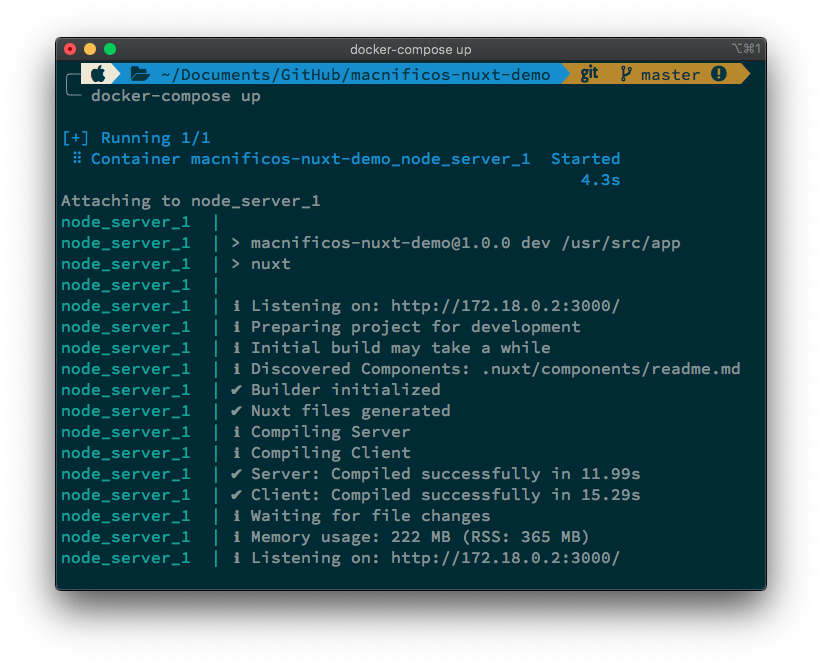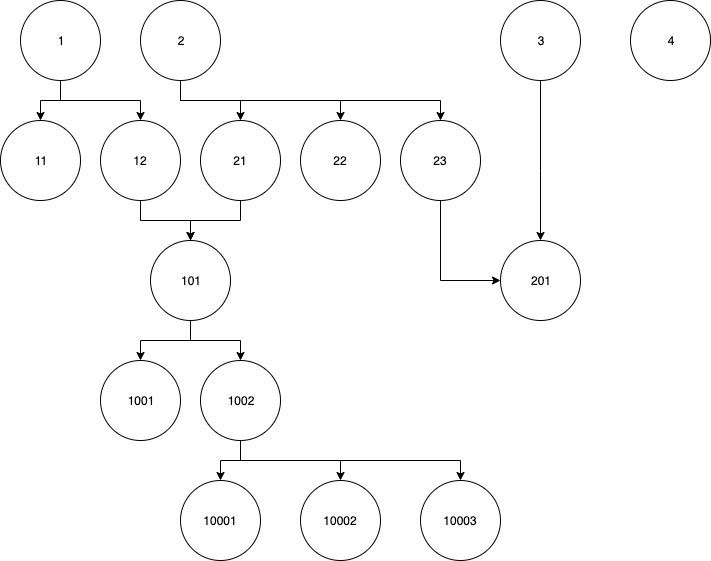Table of contents:
A live version has been deployed on the Heroku Cloud Application Platform, check it!
https://macnificos-nuxt-demo.herokuapp.com/
We have an API endpoint that returns a one level JSON object where each property name is a category ID and, it stores an array of other category IDs. This array of category IDs are sub-categories.
So, if we recive a JSON like this from the API:
{
1: [11, 12],
2: [21, 22, 23],
3: [201],
4: [],
12: [101],
21: [101],
23: [201],
101: [1001, 1002],
1002: [10001, 10002, 10003]
}We should build a categories tree like this:
We used the following command for generating the new app:
$ yarn create nuxt-app macnificos-nuxt-demoThen, we chosen the following options from the command wizard:
create-nuxt-app v3.7.1
✨ Generating Nuxt.js project in macnificos-nuxt-demo
? Project name: macnificos-nuxt-demo
? Programming language: JavaScript
? Package manager: Yarn
? UI framework: Vuetify.js
? Nuxt.js modules: Axios - Promise based HTTP client, Progressive Web App (PWA)
? Linting tools: ESLint, StyleLint
? Testing framework: Jest
? Rendering mode: Universal (SSR / SSG)
? Deployment target: Server (Node.js hosting)
? Development tools: Dependabot (For auto-updating dependencies, GitHub only)
? Continuous integration: None
? What is your GitHub username? josepcrespo
? Version control system: Git- Clone the project on your computer:
git clone https://github.com/josepcrespo/macnificos-nuxt-demo.git- Change to the new project directory:
cd macnificos-nuxt-demo- Build and, start the Docker environment
docker-compose build --no-cache --force-rm && docker-compose upWait until you can see "Listening on: http:// …" on the last line of the shell. Then you can open your favorite web browser at http://localhost:3000/.
If you already built the Docker images, containers, volumes, network, etc, and only needs to start the enviroment:
docker-compose upYou will see something like this:
 and you can interact with the app at http://localhost:3000/
and you can interact with the app at http://localhost:3000/
If you don't want a full Docker environment, here you have a list of commands for developing directly on your computer:
# install dependencies
$ yarn install
# serve with hot reload at localhost:3000
$ yarn dev
# build for production and launch server
$ yarn build
$ yarn start
# generate static project
$ yarn generateFor detailed explanation on how things work, check out the documentation.
You can create the following extra directories, some of which have special behaviors. Only pages is required; you can delete them if you don't want to use their functionality.
The assets directory contains your uncompiled assets such as Stylus or Sass files, images, or fonts.
More information about the usage of this directory in the documentation.
The components directory contains your Vue.js components. Components make up the different parts of your page and can be reused and imported into your pages, layouts and even other components.
More information about the usage of this directory in the documentation.
Layouts are a great help when you want to change the look and feel of your Nuxt app, whether you want to include a sidebar or have distinct layouts for mobile and desktop.
More information about the usage of this directory in the documentation.
This directory contains your application views and routes. Nuxt will read all the *.vue files inside this directory and setup Vue Router automatically.
More information about the usage of this directory in the documentation.
The plugins directory contains JavaScript plugins that you want to run before instantiating the root Vue.js Application. This is the place to add Vue plugins and to inject functions or constants. Every time you need to use Vue.use(), you should create a file in plugins/ and add its path to plugins in nuxt.config.js.
More information about the usage of this directory in the documentation.
This directory contains your static files. Each file inside this directory is mapped to /.
Example: /static/robots.txt is mapped as /robots.txt.
More information about the usage of this directory in the documentation.
This directory contains your Vuex store files. Creating a file in this directory automatically activates Vuex.
More information about the usage of this directory in the documentation.
